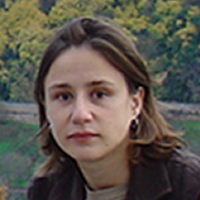Name
Yoctosecond imaging of QCD collectivity using jet observables
Code
835105 - YoctoLHC
Beneficiary Entity
LIP - Laboratório de Instrumentação e Física Experimental de Partículas
Project summary
QCD is the only sector of the Standard Model where the exploration of the first levels of complexity, built from fundamental interactions at the quantum level, is experimentally feasible. An outstanding example is the thermalised state of QCD matter formed when heavy atomic nuclei are smashed in particle colliders.Systematic experimental studies, carried out in the last two decades, overwhelmingly support the picture of a deconfined state of matter, which behaves as a nearly perfect fluid, formed in a very short time, less than 5 yoctoseconds. The mechanism that so efficiently brings the initial out-of-equilibrium state into a thermalised system is, however, largely unknown. Most surprisingly, LHC experiments have found that collisions of small systems, i.e. proton-proton or proton-lead, seem to indicate the presence of a tiny drop of this fluid in events with a large number of produced particles. These systems have sizes of 1 fm or less, or time-scales of less than 3 ys. To add to the puzzle, jet quenching, the modifications of jet properties due to interactions with the medium, has not been observed in these small systems, while jet quenching and thermalisation are expected to be controlled by the same dynamics. Present experimental tools have limited sensitivity to the actual process of thermalisation. To solve these long-standing questions we propose, as a completely novel strategy, using jet observables to directly access the first yoctoseconds of the collision. This strategy needs developments well beyond the state-of-the-art in three subjects: i) novel theoretical descriptions of the initial stages of the collision — the first 5 ys; ii) jet quenching theory for yoctosecond precision, with new techniques to couple the jet to the surrounding matter and novel parton shower evolution; and iii) jet quenching tools for the 2020’s, where completely novel jet observables will be devised with a focus on determining the initial stages of the collision.
Support under
Reforçar a investigação, o desenvolvimento tecnológico e a inovação
Region of Intervention
...
Funding
Total eligible cost
€ 399,062.00
EU financial support
Funding for LIP
€ 0.00
€ 399,062.00
National public financial support
€ 0.00
Dates
Approval
Start
2019-10-01
End
2026-06-30
Publications
| Deep Learning for the Classification of Quenched Jets | Article in international journal (with direct contribution from team) | published |
| Exploring the time axis within medium-modified jets | Article in international journal (with direct contribution from team) | published |
| From soft to hard radiation: the role of multiple scatterings in medium-induced gluon emissions | Article in international journal (with direct contribution from team) | submitted |
| Glasma fluctuations at finite proper times | International Conference Proceedings | submitted |
| Improved background subtraction and a fresh look at jet sub-structure in JEWEL | Article in international journal (with direct contribution from team) | published |
| Low projectile density contributions in the dilute-dense CGC framework for two-particle correlations | Article in international journal (with direct contribution from team) | published |
| Multiparticle production in proton-nucleus collisions beyond eikonal accuracy | Article in international journal (with direct contribution from team) | published |
| Picturing QCD jets in anisotropic matter: from jet shapes to Energy Energy Correlators | Article in international journal (with direct contribution from team) | published |
Presentations
| Apples to Apples in Jet Quenching | Oral presentation in international conference |
| Deciphering Jet Quenching Effects with Novel Reclustering Tool | Poster presentation in international conference |
| Evolution of initial stage fluctuations in the Glasma | Oral presentation in national or international meeting |
| Evolution of initial stage fluctuations in the Glasma | Oral presentation in national or international meeting |
| Full resummed medium-induced radiation spectrum | Seminar |
| Fully resummed medium-induced gluon radiation and the importance of multiple scatterings | Seminar |
| In-medium energy loss | Oral presentation in national or international meeting |
| Initial Stage Fluctuations in Heavy Ion Collisions | Seminar |
| Jet Substructure as a Tool for Quark Gluon Plasma Tomography | Oral presentation in national or international meeting |
| Low projectile density contributions in the dilute-dense CGC framework for two-particle correlations | Seminar |
| Parton cascades at DLA: the role of the evolution variable | Oral presentation in international conference |
| Parton cascades at DLA: the role of the evolution variable | Oral presentation in international conference |
| QCD and heavy ion physics | Outreach seminar |
| Unbiased quantification of jet energy loss | Student presentation in advanced training event |
| Unbiased quantification of jet energy loss | Oral presentation in international conference |
| What is a quenched jet ? | Seminar |
| What we have learnt from jet quenching at the LHC | Seminar |
Theses
| Geometrical aspects of jet quenching in small systems | ||
| Improving the vacuum baseline for in-medium jet physics studies | ||
| Jetography in Heavy Ion Collisions | ||
| Sensitivity of jet sub-structure observables to jet quenching in collisions of light nuclei | ||
| The soft-hard antenna spectrum in presence of a QGP | ||
| The substructure of in-medium jets |
Team
| André Carvalho Martins Barreta Cordeiro |
| Carlota Andrés Casas |
| Francisco Alves Barreiro |
| João Miguel Martins da Silva |
| José Guilherme Teixeira de Almeida Milhano |
| Liliana Marisa Cunha Apolinário |
| Manuel Gonçalo Oliveira Mariano |
| Marco António Coelho Leitão |
| Pablo Guerrero Rodriguez |
| Tomás de Oliveira Fonseca Cabrito |

